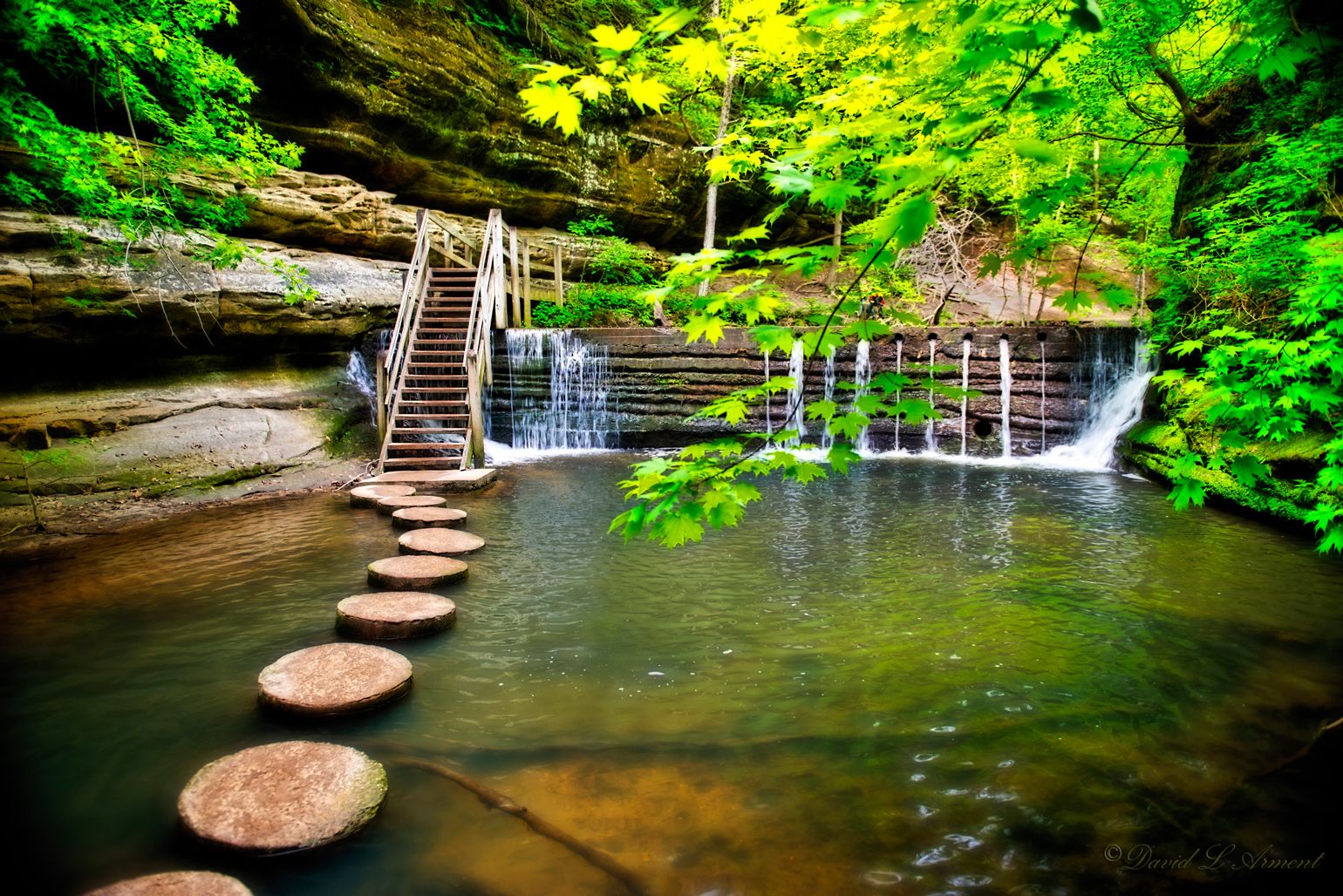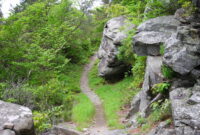Fun hiking trails near me offer a fantastic escape into nature, catering to diverse preferences and fitness levels. Whether you’re a seasoned adventurer seeking challenging climbs or a casual walker looking for a relaxing stroll, the right trail awaits. This exploration delves into finding the perfect fit, considering factors like distance, difficulty, scenery, and proximity to your location, ensuring an enjoyable and safe outdoor experience.
The search for “fun hiking trails near me” reveals a wealth of possibilities, influenced by individual definitions of “fun” and geographic limitations. For some, fun means conquering a challenging peak; for others, it’s a leisurely walk with scenic views. This guide helps navigate these diverse preferences, providing detailed descriptions, practical advice, and user reviews to aid in your search for the ideal trail.
Trail Characteristics and Descriptions
Choosing the right hiking trail depends heavily on understanding its characteristics. Factors like difficulty, distance, and notable features significantly impact the overall experience, ensuring a safe and enjoyable adventure for all skill levels. Careful consideration of these elements is crucial for planning a successful hike.
Trail Characteristics Table
The following table summarizes key characteristics for several local trails. Note that difficulty levels are subjective and can vary based on individual fitness and experience.
| Trail Name | Difficulty Level | Distance (miles) | Notable Features |
|---|---|---|---|
| Whispering Pines Trail | Easy | 2.5 | Gentle incline, scenic overlooks, abundant pine trees |
| Rocky Ridge Trail | Moderate | 5.0 | Rocky terrain, steep inclines, panoramic valley views |
| Summit Ascent Trail | Difficult | 8.0 | Strenuous climbs, challenging rock scrambles, breathtaking summit vista |
| Riverbend Walk | Easy | 1.0 | Flat, paved path alongside a river, ideal for leisurely strolls |
Trail Descriptions
Detailed descriptions help hikers visualize the trail and prepare accordingly. These descriptions should accurately reflect the terrain, challenges, and rewards of each trail.
Whispering Pines Trail: This easy, 2.5-mile loop trail is perfect for beginners or those seeking a relaxing hike. The gentle incline allows for a steady pace, and the towering pine trees create a serene and peaceful atmosphere. Sunlight filters through the canopy, creating dappled shadows on the path, and the air is filled with the calming scent of pine needles. Occasional benches provide resting spots to enjoy the quiet beauty of the forest. The trail culminates in a scenic overlook offering stunning views of the valley below.
Rocky Ridge Trail: A more challenging 5-mile hike, Rocky Ridge Trail offers a rewarding experience for moderately fit individuals. The trail features several steep inclines and rocky terrain, requiring surefootedness and a moderate level of stamina. However, the effort is handsomely rewarded with breathtaking panoramic views of the surrounding valley. Imagine the feeling of the wind on your face as you stand atop a rocky outcrop, gazing out at the expansive landscape stretching before you – a vista of rolling hills, vibrant green meadows, and a distant mountain range bathed in the golden light of the setting sun. This trail demands preparedness, including sturdy footwear and plenty of water.
Summit Ascent Trail: This challenging 8-mile trail is only recommended for experienced hikers with excellent physical fitness. The trail features strenuous climbs and challenging rock scrambles that require both strength and agility. The reward, however, is unparalleled. Reaching the summit offers an unforgettable, breathtaking vista that stretches as far as the eye can see. The air is crisp and clean, the sense of accomplishment immense. The journey is demanding, but the panoramic views from the peak are a testament to the effort expended. It’s a trail that will test your limits, but the reward is well worth the challenge.
Importance of Accurate Trail Difficulty Portrayal
Accurately portraying trail difficulty is paramount for hiker safety and satisfaction. Misrepresenting the difficulty level can lead to unprepared hikers facing unexpected challenges, potentially resulting in injury or a frustrating experience. Clear and concise descriptions, utilizing terms like “easy,” “moderate,” and “difficult,” coupled with detailed explanations of specific challenges (e.g., steep inclines, rocky terrain, water crossings), enable hikers to make informed decisions based on their abilities and experience. Providing detailed information allows hikers to self-assess and select trails appropriate for their skill level, ensuring a safe and enjoyable hiking experience for everyone.
Visual Representation of Trails
Visualizing hiking trails effectively enhances the planning and enjoyment of outdoor adventures. A well-crafted visual representation, whether through descriptive text, a textual map, or a word-painted landscape, allows potential hikers to anticipate the challenges and rewards of the trail. This section explores various methods of visually representing trails, emphasizing the importance of conveying the visual experience.
A Descriptive Trail Account
Imagine embarking on the Whispering Pines Trail. The initial section is a gentle incline through a dense canopy of towering pines, their needles casting dappled sunlight onto the path. The air is cool and fragrant with the scent of pine and damp earth. The trail surface is a smooth, packed dirt, easy on the feet. As you ascend, the trees gradually thin, revealing breathtaking vistas of rolling hills bathed in golden afternoon light. Wildflowers in vibrant hues of purple and yellow dot the meadows alongside the trail. The final stretch leads to a rocky outcrop, offering panoramic views of a sparkling lake nestled in the valley below. The transition from shaded forest to sun-drenched meadow and finally, the commanding perspective from the rocky outcrop, makes this trail a visually stunning experience.
Textual Trail Map
The following outlines the key landmarks and directions for the Willow Creek Trail:
Start: Willow Creek Trailhead (Parking Area)
1. Follow the main trail (east) for 0.5 miles.
2. At the fork, bear left (north) onto the creek trail.
3. Cross Willow Creek using the sturdy footbridge (0.75 miles from start).
4. Continue along the creek for 1 mile, passing several small cascades.
5. Reach the scenic overlook with views of the valley (1.75 miles from start).
6. Return via the same route.
Note: This is a loop trail, approximately 3.5 miles in total.
Word-Painted Trail Elevation and Environment
The Redwood Ridge Trail begins in a lush, shadowy forest floor, the air thick with the scent of damp earth and decaying leaves. The trail winds gently upward, the gradient increasing subtly. The towering redwoods, their massive trunks draped in moss, become increasingly impressive as the elevation gains. The undergrowth shifts from ferns and shrubs to more resilient plants adapted to higher altitudes. Midway, the forest opens into a sun-drenched meadow, wildflowers carpeting the ground. From here, the final ascent is steeper, leading to a rocky summit with panoramic views extending for miles. The transformation from the dark, cool forest to the open, sunlit meadow and then the rugged, windswept summit provides a dramatic visual narrative.
Visual Appeal of a Specific Trail Feature
The cascading waterfall on the Emerald Falls Trail is a truly captivating sight. The water plunges over a series of rocky ledges, creating a shimmering curtain of white water. The surrounding rock face is covered in vibrant green moss, creating a stunning contrast against the white water. A mist hangs in the air, carrying the refreshing scent of clean water and damp earth. The sound of the cascading water adds another layer to the experience, a constant, soothing rhythm that enhances the visual beauty of the falls. The sun illuminates the falls, creating rainbows in the mist. It is a truly breathtaking spectacle.
Final Summary
Ultimately, the quest for “fun hiking trails near me” is a personal journey, dependent on individual preferences and physical capabilities. By carefully considering trail characteristics, safety precautions, and user reviews, you can select a path that promises an enriching and memorable outdoor experience. Remember to prioritize safety, prepare adequately, and respect the environment to ensure a rewarding adventure for yourself and others.




